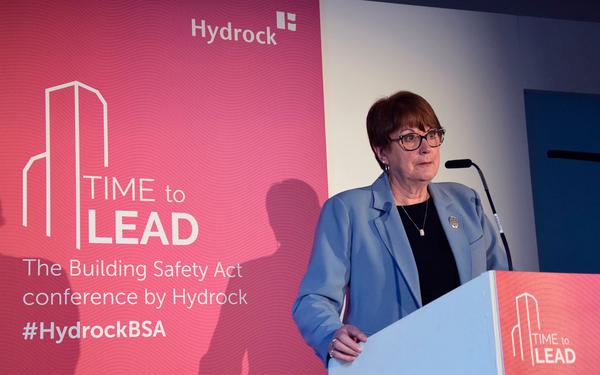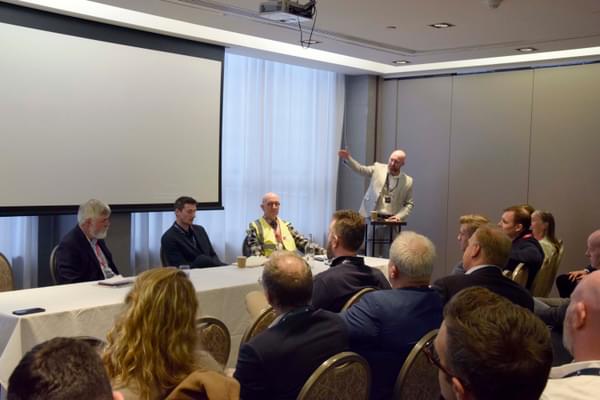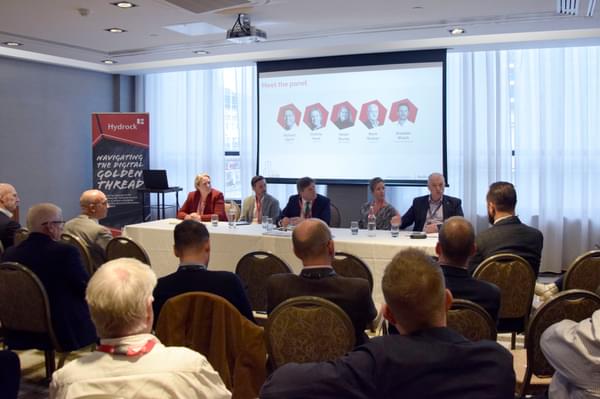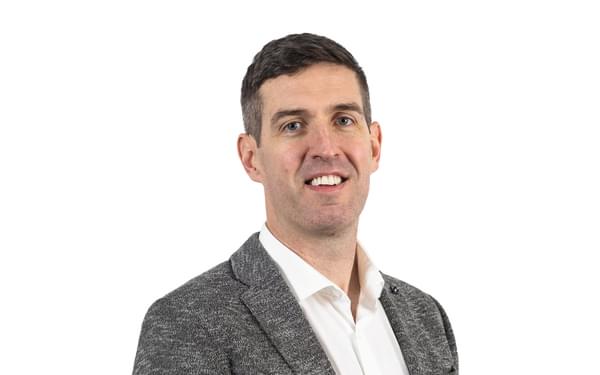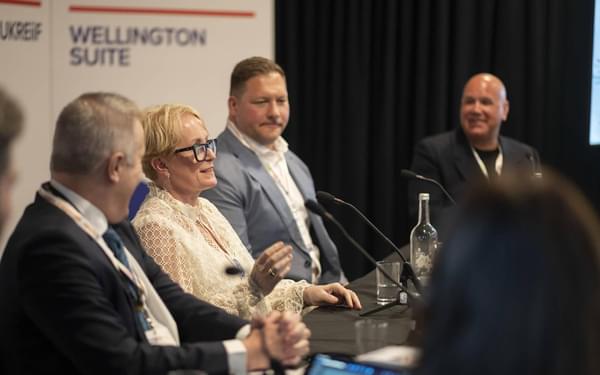Back to Articles
Our Time to Lead session: The residential sector and the Building Safety Act
31st Oct 2023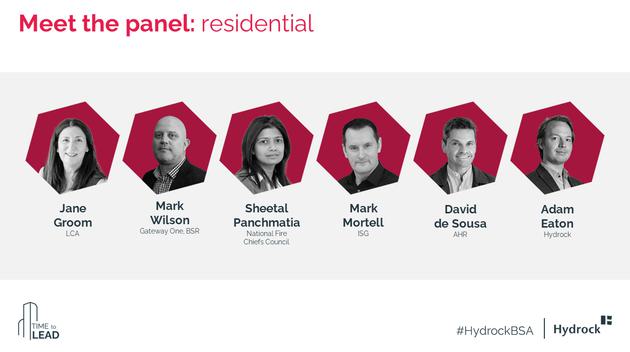
At our 'Time to Lead' conference on 18 October 2023, our break-out session asked what the Building Safety Act (BSA) means for the residential sector.
Chaired by London Communications Agency's Jane Groom, our panellists were Sheetal Panchmatia, Protection Technical Officer at the National Fire Chiefs Council, Adam Eaton, Director of Fire Safety at Hydrock, Mark Mortell, Health and Safety Director at ISG, Mark Wilson, Operational Lead for Policy and Planning Gateway One at the Building Safety Regulator and David de Sousa, Director of Architecture at AHR.
The Building Safety Act is hundreds of pages of legislation that we know will transform the industry, but it is starting with a focus on higher risk residential buildings. Ultimately, we know this sector needs to get its ducks in a row, and fast. This panel discussion ultimately reminded us who this legislative upheaval will ultimately benefit - the residents of tall buildings.
So, what were the key talking points and take-aways? Let's summarise:
1. Doing the right thing
Putting the safety and peace of mind of residents front and centre was of huge importance to our panel, with everyone acknowledging the importance of 'doing the right thing'. Sheetal opened the discussion by covering how the changes made by the Building Safety Act are going to inform the Fire and Rescue Service's strategy going forward. She talked about how we're finally realising that we all have a part to play in community safety, and the importance of effective communication and education in helping resident engagement to evolve.
Adam Eaton agreed, acknowledging that we as an industry must make sure buildings are safe enough to live in. "If you’re living in a high rise residential building, the trauma you will have been through, the mental strain it will have put on you, to see all these things happening [recently]…", he said. "If you're a resident in a tall, single-stair building you will be worrying and having sleepless nights thinking, "Am I safe?"
The BSR's Mark Wilson added that the pressure for change isn't necessarily coming from within the industry but from investors, saying "that's something we all need to reflect on, in terms of wanting to do the right thing."
Jane Groom agreed that "This is a human story. This is about the right that people have to feel safe in their homes," and that it's up to us as an industry to find the solutions to make that the case.
2. Going 'above and beyond'
A huge part of doing the right thing is challenging the current mindset encountered in parts of the industry around a building being 'good enough'. Mark Mortell shared that ISG were early adopters of the digital golden thread, first starting to build comprehensive records around four and a half years ago. From the first building they went to physically assess and fully document, which took months of work, they began to set their own quality standards for high risk buildings across sectors, including hospitals, schools, prisons and more.
The company took the decision to remove all combustible materials from envelopes of all buildings. This approach, while morally sound, had enormous financial implications, and left them in an isolated position in the market. They eventually modified this to follow a risk-based approach because they found it to be unsustainable for business continuity.
Alone in going above and beyond building regulations, they found it "difficult when competitors are not working to same standards", he said, often encountering a 'good-enough' mentality.
While difficult decisions have been made, including walking away from several projects, this above and beyond approach is starting to trickle down to all of their projects. "This way", Mark said, "we are able to have a clear conscience and future-proof the building for ourselves, our customers, and those using the buildings."

3. Second staircases
There has been much discussion across the sector around the safety of staircases in high rise residential buildings. Just before Christmas 2022, The Department for Levelling Up, Housing & Communities (DLUHC) introduced the possible requirement for a second staircase in buildings above 30m in height, encouraging all developments “to prepare for this change now”. In February 2023, the Mayor of London mandated a second staircase in all new buildings above 30m with immediate effect.
Hydrock's Adam Eaton gave a nod to the fact it's an emotive point with strong arguments either side, some of which may be politically motivated. However, he argued that design should always be evidence-based, and the government noted that there is no conclusive evidence that single staircase buildings are unsafe.
He clarified his position: "I am not single stair. I am not two stairs. I am all about the evidence. Let's develop a safe system for that building. If it is [for example] 100 metres tall, and it has a single stair, but it's got all the right fire safety features in there and has been designed and built properly… it can be perfectly safe," he said. "Alternatively, multiple stair buildings can be the opposite. If they are built wrong and both stairs connect to an EV charging car park, there are no sprinklers and the walls aren’t built properly, those buildings can be just as risky as single stair buildings,"
Jane summarised that it's not a black and white situation but more complex and that different solutions for different buildings may be required.
Mark Mortell from ISG agrees with a holistic approach to building design, however, he said that single staircase tall buildings are now a "massive red flag" for the business, playing a large decision in informing whether or not they want to tender for that particular piece of work.
Mark Wilson agreed that a second staircase is not a 'silver bullet'. In his position overseeing Planning Gateway One, he has observed the default design position move from single staircase to multiple within a few years. Their approach from early on has been to ensure that resident safety and convenience is prioritised. "I think that in future, in you want to have a single stair building, there'll have to be compelling reasons for it," he argued. "The level of evidence that you'll need to support that design will have to be there from the planning stage. The rationale behind it will have to be strong."
4. Competence is key
David de Sousa brought up another key theme that emerged across the whole day: competence. He said that AHR Architects have been working on developing team competence and being able to demonstrate that to clients for the last 18 months. As well as membership of professional bodies such as RIBA, they have shifted their internal culture and attitude to CPD, introducing compulsory training during core hours rather than optional lunchtime sessions.
He also brought up a specialist internal group that focuses on technical reviews, and the importance of compliance and quality control/standards.
Following a question from an audience member, Sheetal added that she contributed to the competence requirements for the management of safety in residential buildings (PAS 8673), a framework to guide building managers through what is required of them once the building has passed into the occupation stage.
It clarifies that those managing safety in residential buildings should possess the competency to:
a) explain the golden thread and safety case principles and processes;
b) identify the information needed to maintain an up-to-date record of the golden thread principles and safety case.
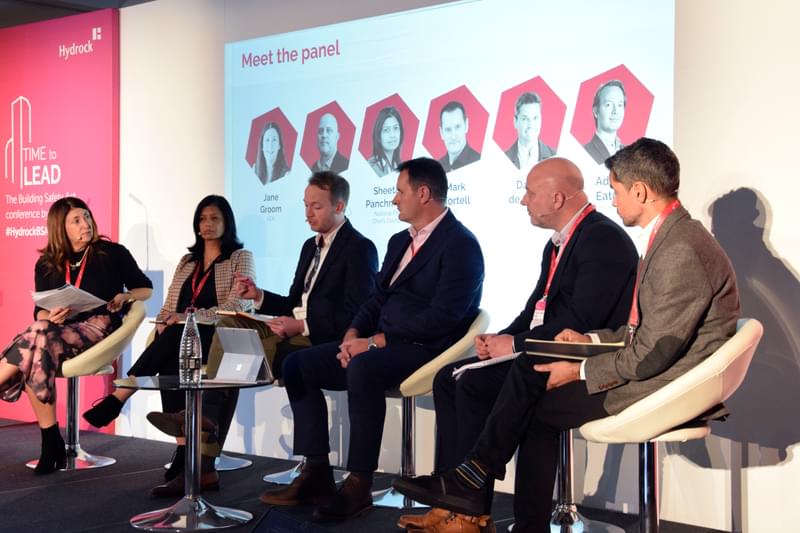
5. The 3 c's: collaboration, communication, culture
Three major themes arose during this discussion around what needs to change across the industry for the better. They were:
Collaboration: David de Sousa observed that we are "still working in isolated [stages] as an industry. We need to break down barriers and bring everyone on board as soon as possible. The technology is there, the skillset is there." He commented that futureproofing our approach involves fully embracing digital tools to enable us to collaborate.
Communication: Mark Wilson pointed out the importance of different teams talking to each other, drawing comparisons to the lessons we could collectively learn from the Baby P enquiry in 2009, where failings were found to have happened because childcare departments failed to effectively communicate.
Culture: Adam Eaton noted that that five or six years ago fire engineers were seen as a hindrance, often being engaged on a project during relatively late stages to "work their dark magic" and make problems go away. He commented that a lot has changed since then, with fire engineers now actively engaged much earlier and able to prevent any issues becoming "baked in". As such, he's hopeful that the industry is able to embrace change.
Mark Mortell commented that part of their challenge is embedding this new approach in every member of an organisation. And Jane Groom mirrored this, concluding:
"We do keep coming back to this don't we, embedding cultural change. That is just so important. It's not just about understanding the Act, it's about making sure that people actually do [make changes], because in the end, it comes down to real people, doesn't it?"
Key takeaways
- If we can improve collaboration and communication, we can change the culture of the industry.
- It was agreed that we need to continue thinking about fire safety much earlier in the design process.
- There is cause for optimism - with new builds, we can start as we mean to go on.
- Play the long game: Let's leave the 'it's good enough' mentality behind and be leaders.
- We're waiting for further clarification around second staircases: watch this space…
Stay informed with our dedicated newsletter featuring news and updates, the latest talking points and everything else you might need to know about the Building Safety Act. Sign up here.


